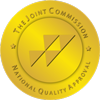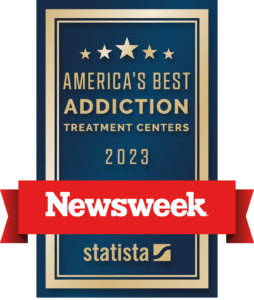Evernorth Insurance
Sana Lake Recovery is an In-Network Provider for Evernorth
Evernorth Insurance For Addiction and Mental Health Treatment
 Mental health issues and addiction are two of the biggest concerns of the modern world today. While both do have viable solutions, most people afflicted with either, or both, are hindered from seeking treatment due to two things: lack of information, and the considerable cost that comes with it.
Mental health issues and addiction are two of the biggest concerns of the modern world today. While both do have viable solutions, most people afflicted with either, or both, are hindered from seeking treatment due to two things: lack of information, and the considerable cost that comes with it.
While there are indeed a lot of healthcare providers and insurance companies that saturate the market with information campaigns, very few, if any, offer a solution that most people could afford.
Evernorth insurance for addiction and mental health treatment is an affordable and accessible way to get the care and therapy needed to deal with substance abuse and mental issues.
What’s Included in Evernorth’s Insurance Coverage for Addiction?
Evernorth’s insurance for addiction and mental health provides coverage for the treatment of most known types of substance abuse. The fact that Evernorth covers a massive array of addictions makes it ideal for anyone seeking to kick the habit and get back to living a normal and sober life.
This type of coverage is noteworthy as most other health insurance firms only cover a few of the more popular addictions, as the treatment for some types requires comprehensive treatment, costly medication, rehabilitation facilities, and professionals to conduct the treatment. The coverage offered by Evernorth extends to the following addiction types:
In 2019, the National Survey on Drug Use and Health (NSDUH) released a report stating that in the US alone, nearly 15 million people aged 12 and older had alcohol use disorder. An estimated 95,000 people die from alcohol-related causes each year. The same report reveals that in 2019, alcohol-impaired driving claimed the lives of 10,142 people.
These staggering figures point to the fact that alcohol is the third leading preventable cause of death in the US. Many life-threatening conditions are also attributed to alcohol use such as alcohol-associated liver disease, unspecified liver cirrhosis, liver cancer, hypertension, supraventricular cardiac dysrhythmia, heart disease, and stroke.
This is why alcohol abuse rehabilitation is extremely important and should be made accessible to more people. To not make it so would simply be adding to these alarming statistics.
Most people who are into prescription drug abuse do so because they are either not aware or convinced of how dangerous it is since they assume it would not be prescribed if it were, or they have easier access to it. This type of addiction is prevalent in all age groups, unlike other types of addiction that tend to be focused on a specific age group only.
The range of abused prescription drugs encompasses practically all known prescription medications, from painkillers to anti-anxiety drugs, to sedatives, and stimulants as well. Most who got into it at an early age admit that they started with what they could get their hands on in the house or in school, which was either the prescription medication of relatives.
The problem with prescription drug abuse is that it is not like recreational drugs that many only take at events such as parties or when going to a club. Those who are into prescription drugs engage in the habit more chronically and they are also more than willing to do whatever it takes to ensure they have a regular source of whatever it is they are abusing.
Stimulant abuse has a peculiarity in that many who abuse it do so with the notion that they are not in it just for the high or for recreation. Rather, they believe that the substance is a better version of them, either in physicality or in intellect.
The truth of the matter is that regardless of their conviction, it is still an addiction. Stimulants also happen to be quite potent, and as such, could affect the body of the user profoundly, creating lasting side effects and long-term damage.
The challenge of treating those addicted to stimulants lies in adjusting their perception of stimulant use and the concurrent behavior that comes with it. Most of those who take stimulants believe they could only be better at being themselves only by using stimulants. Stimulants provide short bursts of energy, and wakefulness, and briefly enhance a person’s ability to focus, which is why people who are hooked on them believe it makes them better.
If there is one way to describe life today, it is stressful. It is so stressful that a coping mechanism is a necessity just to make it through the day. Sadly, the coping mechanism that many develop to deal with stress is associated with substance abuse.
Benzodiazepine, or more popularly known as benzos, are sedatives. Many find that the only way to unwind and destress from the rush of daily life is through the use, and eventually, abuse, of sedatives. Sedatives, however, also happen to be highly addictive, and as many soon find out, are immensely difficult to keep away from.
Rehabilitation from benzo addiction for many could also mean hospitalization, as the damage induced by benzo abuse often targets the central nervous system. The damage done by benzo abuse is not just physical, but also behavioral, as the neurological damage also leads to personality disorders in some.
Opioids are substances with powerful narcotic effects. Typically associated with painkillers, many use opioids as a means of “escape” from a less-than-appealing reality. The high people get from opioids supposedly does not just kill physical pain, but also mental anguish and emotional issues as well, as it effectively leaves a person in a stupor, unable to form a single cohesive thought.
A 2021 report from the Centers for Disease Control and Prevention’s National Center for Health Statistics states that there was a 28.5% increase in opioid-related overdose deaths in the US from the year before. While some argue that the increase in use was because of the isolation and oppressive atmosphere created by the COVID-19 pandemic, it does not change the fact that a high percentage of opioid users suffer an overdose and even death.
On top of the high probability of overdose, withdrawal from opioids is so agonizing that many former users welcome the idea of suicide. This is why opioid addiction treatment includes constant monitoring and comprehensive counseling.
What Kind of Treatment Does Evernorth Insurance Cover?
The wide array of addiction types that fall under the Evernorth coverage necessarily means that an equally wide array of treatment options is likewise covered. Some forms of substance abuse require specialized care, particularly when it comes to counseling, which is why having something like the Evernorth insurance for addiction and mental health treatment could prove to be a lifesaver.
Evernorth allows a person with either mental health issues or drug addiction to seek treatment at premier centers like Sana Lake Recovery, where they have different programs all tailored to provide the most effective and lasting solutions to addiction.
Treatment options include:
- Inpatient/Residential programs
A Better Chance at Life Awaits With Evernorth Insurance and Sana Lake Recovery
Recovery, care, and treatment should be made available to everyone because everyone will need it at some point. This belief is shared by both Evernorth and Sana Lake Recovery, as everyone deserves a chance to get better and live a happy and sober life. Reach out now to see how Evernorth and Sana Lake Recovery could help you.




